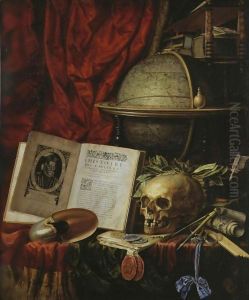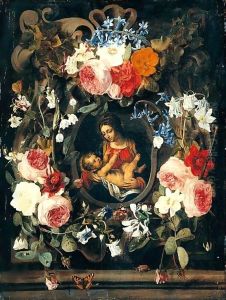Christiaan Luyckx Paintings
Christiaan Luyckx (also known as Christian Luycks or Luyx) was a Flemish Baroque painter, born in 1623 in Antwerp, Belgium. He is primarily known for his still-life paintings, which often included vanitas themes, a common genre during the 17th century that emphasized the transient nature of life and the futility of pleasure, often through the depiction of skulls, extinguished candles, and withered flowers.
Luyckx was a pupil of the prominent still-life painter Philips de Marlier in Antwerp. Later, he became a master in the Antwerp Guild of Saint Luke, which was a typical trajectory for an artist of his time to establish a professional career. He was recorded as a master in the guild books in 1645. His works often displayed a high level of craftsmanship and were composed of intricate details that conveyed the textures and materiality of the depicted objects, which ranged from luxurious items like goblets and silverware to the more mundane such as food and books.
Although there is not much information about his life after the mid-17th century, Luyckx appears to have been quite successful during his active years as a painter. His works were sought after, and he enjoyed the patronage of wealthy clients. He produced paintings for an international market, with his pieces finding their way into collections across Europe. As with many artists of the period, much of his life remains a mystery, and the last known record of him dates after 1657, leading to uncertainty about the exact year of his death.
Christiaan Luyckx's legacy lies in his still-life works, which continue to be appreciated for their beauty and historical value. They provide insight into the cultural and artistic interests of the Flemish Baroque period. However, due to the limited information about his life and the relatively small number of his works that have been clearly attributed to him, Luyckx is not as well-known as some of his contemporaries such as Jan Davidsz. de Heem or Willem Kalf.

